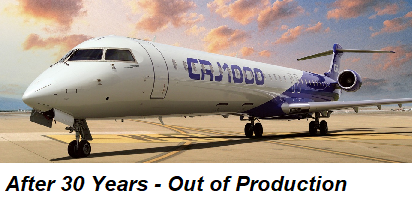Follow Fleet Trends & See The Future
Where fleet trends go, passenger volume goes along.
Every part of aviation forecasting is driven by one core metric: the fleets that airlines actually order and operate.
The number and type of airliners being used, on order and to be retired are the harbingers of what can be expected not only in regard to passenger and cargo volumes, but in other areas such as component demand, the number and categories of ground and support equipment, airport facilities, overhaul hangar bay needs, technician numbers, and dozens more aviation sectors.
Airplane fleets and the emerging dynamics of same determine the rest of the future for aviation.
This is what sets Boyd Group International apart from other forecast entities. We do not rely on outdated metrics that have no connection to the real world. We’re at the forefront of the drivers of the aviation future. One of them is fleet forecasting. For us, this is an absolutely essential component of projecting the future.
Let’s Take A Quick Primer In Reading The Fleet-Driven Tea Leaves.
Last week, there were two apparently unrelated events regarding fleets. But, put together they are an important directional signal for air service planning.
Event One: Mesa Retires Last CRJ-700. The Phoenix-based carrier has parked its last CRJ-700s, and now operates only 76-seat CRJ-900s and E-175s, leased out to major airline customers. It is also bringing in an additional 737 for its cargo operations. But the days of flying turboprops and smaller jets are over.
Event Two: End of The CRJ Line. On March 2, Bombardier CRJ-900, S/N 15499 was delivered to SkyWest. This was the last CRJ to be produced. Done, finished. No More. Bombardier is  out of the airliner business.
out of the airliner business.
The first prototype CRJ-100 emerged in May of 1991. In total, 2,014 CRJs of all models were produced. Just over half are still flying, with the majority in North America. And that’s a number that’s going to head south fast in the next 36 months.
Two Different Stories. One Solid Message. These two events are critical to understanding the trajectory of air service planning in the USA. There are no more “small” airliners coming down the production line. Or even on the drawing board. That means airline fleet and mission capabilities will evolve.
CRJs and ERJs are fine airplanes, but as they age, they are going to be retired. It is basic aeronautical economic reality. A reality that cannot be ignored in future air service planning.
No Size Replacements Coming. The fact is that the that the two main platforms that were produced – the Bombardier CRJ and Embraer ERJ – have their roots in political government planning, and not due to hard economic market realities. When the two companies were privatized, the massive developmental costs were “sunk” by the respective governments.
Unfortunately, there are no sugar-daddy governments around to support the clean-sheet planning cost for small capacity (and small revenue-producing) airliners. The gelt needed would be not much less than for a new 150-seat airliner that would have more value and sell for a lot more per unit. Do the math.
Packaged Air Service Deals – Short Term Application of Excess Small Jets. Indeed in the near term, we may see new applications of RJs, in the form of “pre-designed route system” deals with some small lift lessors (a.k.a. “regional” airlines) with the intent of flying specific markets from a customer airport. Naturally, with local subsidies in the millions. But even here, it’s a short-term flicker. Aircraft age and costs are not to be denied.
Here’s the message: it won’t be the market “need,” or civic hubris, or ethically-challenged consultant “market studies” that will determine where and how air service will manifest at small communities. At baseline, where and how airlines will operate will be dependent on fleets that airlines operate.
And increasingly, it won’t be small jets. That’s a factor that is a starting point for any air service access program.
_________
In Other Airliner Demand News
While we’re on the subject of fleets…
Good News At Boeing: United’s 737-Max 10 order is back on the active books – 96 units.
Less Than Good News At Boeing: China’s regulators are “not sure” about the 737 Max returning to the skies over the Middle Kingdom. ‘Course they’re not sure… point is more likely that they don’t need them at the moment.
More Less-Than-Good-News At Boeing: The collapse of Norwegian has led to cancellation of an order for 92 Max-8s.
__________
A Note Regarding Aviation Unscripted Videos
If you haven’t viewed the latest Unscripted, click here – we’re discussing how business migrations will be shifting air service demand patterns.
 Also, we’re planning on issuing a new Aviation Unscripted video every Thursday. It’s on Rumble.com by typing in “Aviation Unscripted” (naturally) in the Channel selector. We’re exploring issues not found anywhere else.
Also, we’re planning on issuing a new Aviation Unscripted video every Thursday. It’s on Rumble.com by typing in “Aviation Unscripted” (naturally) in the Channel selector. We’re exploring issues not found anywhere else.
This Thursday, barring any episodic breaking aviation news, we’re taking on the new realities of small community air access challenges.
Log on & let’s talk!